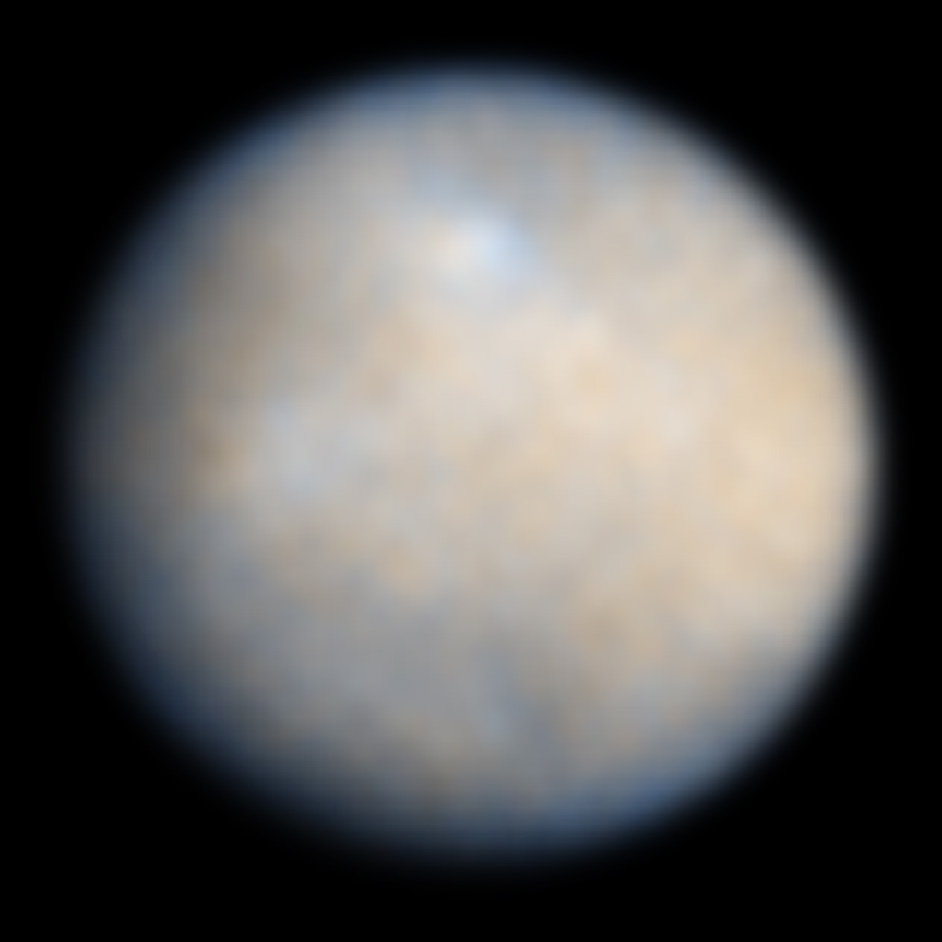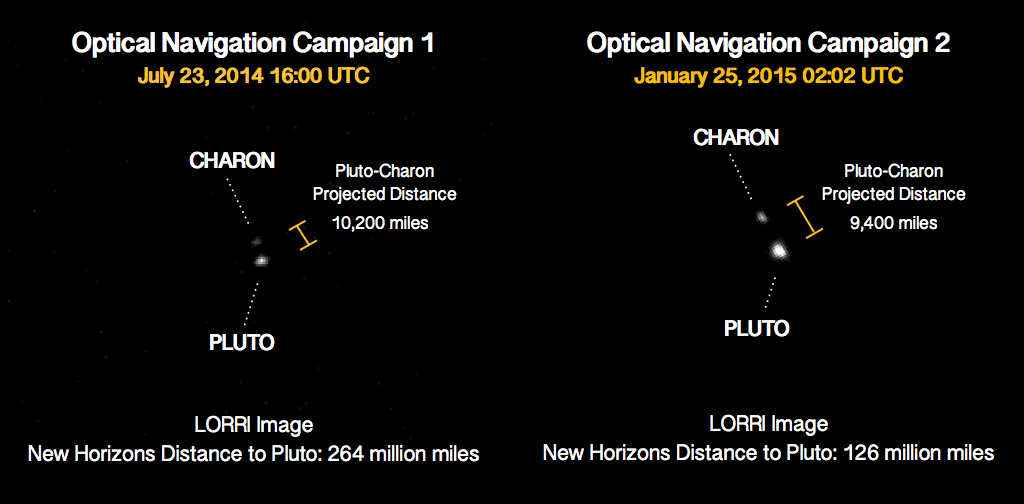Reporting For Duty
It looks like you're new here. If you want to get involved, click one of these buttons!
Quick Links
Categories
The Big Space Exploration Topic [21-08-2017: Total Solar Eclipse in the USA!]
2015 will be a very exciting year for space exploration, as no less than two previously unexplored dwarf planets, Ceres and Pluto, will be visited and photographed by two NASA space probes. Moreover, I think there should be a general topic about the subject matter of space exploration (I could not find a previous related topic).
Now what about those two NASA space probes that will be visiting Ceres and Pluto?
--> The "Dawn" space probe: Which will explore dwarf planet "Ceres", which is orbiting between the circular orbits of planet Mars and planet Jupiter, in the Asteroid Belt.
The official mission site: http://dawn.jpl.nasa.gov/
--> The "New Horizons" space probe: Which will explore dwarf planet "Pluto" and its moons. It has been demoted in 2006 to "dwarf planet" status.
The official mission website: http://pluto.jhuapl.edu/

Before Dawn's arrival, this was the best known image of Ceres, made by the Hubble telescope:

Now Dawn has almost arrived at its destination. Next month March it will go into orbit of Ceres. In the meanwhile Dawn has made a much sharper black-and-white image of Ceres:

As you can see, Ceres is the only real "round" object in the Asteroid Belt (between Mars and Jupiter). Ceres has a diameter of 960 km (give or take a few km's if you measure it from pole to pole or from the equator). It was considered to be the first known asteroid, but has now been fully promoted to "dwarf planet". Ceres has a similar reddish color as compared to Mars. You can find the general stats about Ceres here: http://space-facts.com/ceres/
Pluto however, as you all know by now, has been demoted from "planet" to "dwarf planet". This is the best image we have so far:

And in July of this year, New Horizons will go into orbit of Pluto. At this stage New Horizons is still too far away to make good images, but the probe has awakened from "winter sleep", and it does make pictures for location positioning purposes:

Pluto has a diameter of 2,368 km (give or take 20 km's if you measure it from pole to pole or from the equator) and is located near the Kuiper Belt. Also Pluto appears to be a bit reddish in color. Just to be sure: "A planet is a celestial body that (a) is in orbit around the Sun, (b) has sufficient mass for its self-gravity to overcome rigid body forces so that it assumes a hydrostatic equilibrium (nearly round) shape, and (c) has cleared the neighbourhood around its orbit.". Some facts about Pluto you can find here: http://space-facts.com/pluto/
Both Pluto and Ceres are, according to the new IAU definition (2006) not a full "planet", but a "dwarf planet".
Upcoming three months we can expect the best known detailed pictures from both Ceres and Pluto. That will be very exciting no ;-)?
Now what about those two NASA space probes that will be visiting Ceres and Pluto?
--> The "Dawn" space probe: Which will explore dwarf planet "Ceres", which is orbiting between the circular orbits of planet Mars and planet Jupiter, in the Asteroid Belt.
The official mission site: http://dawn.jpl.nasa.gov/
--> The "New Horizons" space probe: Which will explore dwarf planet "Pluto" and its moons. It has been demoted in 2006 to "dwarf planet" status.
The official mission website: http://pluto.jhuapl.edu/

Before Dawn's arrival, this was the best known image of Ceres, made by the Hubble telescope:

Now Dawn has almost arrived at its destination. Next month March it will go into orbit of Ceres. In the meanwhile Dawn has made a much sharper black-and-white image of Ceres:

As you can see, Ceres is the only real "round" object in the Asteroid Belt (between Mars and Jupiter). Ceres has a diameter of 960 km (give or take a few km's if you measure it from pole to pole or from the equator). It was considered to be the first known asteroid, but has now been fully promoted to "dwarf planet". Ceres has a similar reddish color as compared to Mars. You can find the general stats about Ceres here: http://space-facts.com/ceres/
Pluto however, as you all know by now, has been demoted from "planet" to "dwarf planet". This is the best image we have so far:

And in July of this year, New Horizons will go into orbit of Pluto. At this stage New Horizons is still too far away to make good images, but the probe has awakened from "winter sleep", and it does make pictures for location positioning purposes:

Pluto has a diameter of 2,368 km (give or take 20 km's if you measure it from pole to pole or from the equator) and is located near the Kuiper Belt. Also Pluto appears to be a bit reddish in color. Just to be sure: "A planet is a celestial body that (a) is in orbit around the Sun, (b) has sufficient mass for its self-gravity to overcome rigid body forces so that it assumes a hydrostatic equilibrium (nearly round) shape, and (c) has cleared the neighbourhood around its orbit.". Some facts about Pluto you can find here: http://space-facts.com/pluto/
Both Pluto and Ceres are, according to the new IAU definition (2006) not a full "planet", but a "dwarf planet".
Upcoming three months we can expect the best known detailed pictures from both Ceres and Pluto. That will be very exciting no ;-)?
^ Back to Top
The MI6 Community is unofficial and in no way associated or linked with EON Productions, MGM, Sony Pictures, Activision or Ian Fleming Publications. Any views expressed on this website are of the individual members and do not necessarily reflect those of the Community owners. Any video or images displayed in topics on MI6 Community are embedded by users from third party sites and as such MI6 Community and its owners take no responsibility for this material.
James Bond News • James Bond Articles • James Bond Magazine

Comments
I actually just made this in honor of Pluto
Bond's DB10 is in the center
Hehe, well, I think it's good to know that besides our "normal planets", our solar system has got quite a lot of "dwarf planets". And with dwarf planets I mean other, close-to-perfect spherical bodies.
Moreover, lately new evidence has been found that there are two more planets hiding at the edge of our solar system, most likely twice the size of our own Earth:
http://www.huffingtonpost.com/2015/01/20/two-planets-solar-system_n_6503706.html
Be done for a technical reason ? Also I seem to remember reports last month that a signal had been received from a far distant planet ( like 50,000 years to reach us ) ?
Although I agree life will be found, just a matter of time.............
........ and I for one welcome our new alien overlords ! :D
Seriously thought I do think life will be descovered, and I think it will be in our
Lifetime.
we'd best be left alone ? :D
Never been called a loony before! Thank you! ;)
- Credited: A wise loony ;)
I did see an article a few years back. I can't remember the exact math numbers but the premise was essentially this.
That the odds of two intelligent species co-existing in the universe at the same time are virtually nil ie the "the time of man" is finite and relatively short, as would be the existence of another species. Given the universe is billions of years old, odds of co-existing are not good.
I think the sci-fi films we make in terms of meeting aliens will have to suffice. :D
Full of attitude ! :))
I would think that they would see us as savages, vermin and have to be eliminated. I mean whenever a technologically advance civilization meets one that is not as advanced what happens? Ask the Native Americans how being discovered by Europeans thing worked out for them?
(ask the Asians, and Africans while you're at it)
As far as Pluto goes, I kinda hated it when "experts" demoted the little guy.
Have and we'll have no immunity to ! :D
Actually I predict it'd be the other way around. ;-)
But what ME personally interests, is the chance of finding whatever kind of life. Microbial life or non-photosynthesis-life. People really underestimate this kind of life. And especially when a non-intelligent microbial lifeform is found, it WILL have huge implications for the question that every human being wants to be answered: "Are we alone?".
I already call such a discovery the "2nd giant leap of mankind". And it has ethical complications as well. How are religions going to deal with it? Or what about the scientific implications? How do these alien microbes look like under the microscope? Do they have DNA building blocks? Or do they use other structures'
Arthur C. Clarke and Isaac Asimov have gone even further by adding the suggestion of life getting rid of its biological shell and flying around like a conscience without a body. How about the possibility of bacteria acting in group as one major conscience too? It has been demonstrated, for example, that one single ant cannot escape a certain trap while many of them can, almost as if a whole set of ants link their 'minds' to one another and produce a higher intelligence.
Concerning your remark on religions and such, @Gustav_Graves, can I say that I don't give a thing about that? Religions will have to cope with the truth since there's no other option. I don't think that extra-terrestrial life negates the existence of God; it merely shows that we are nothing particularly special. Ah well, Bruno tried to show that several centuries ago and was reportedly burned at the stake for it, by the Church. Let's not even discuss all the madness Copernicus and others had to deal with. And since we're not in Arkansas now, I can safely criticise those who still "believe" that man once walked with dinosaurs.
Mulder fought the good fight.
They come to colonize us and nothing more! Nothing good can come of any visit.
Will Smith did nice job fending off invasion too, in Independence Day!
I would like to see man go back to the moon and mine for minerals. There must be something in those rocks and craters we can use. And no-one is going to protest environmental degradation etc.
Its the barren lifeless moon. Who cares! :D
Just knock down that monolith thing that Kubrick left behind and get to work.
Set up little golf courses to keep the miners entertained. Build the first course near the Apollo 11 site, and name it after Neil Armstrong.
http://dawn.jpl.nasa.gov/multimedia/Ceres_two_bright_spots.asp
There's one big mystery though. Dawn keeps capturing the same two bright white spots (lights) in the same crater over and over again. So.....what the hell is it? Ultra-reflective ice? A snow covered area?
:D
But in all honesty, I think it's super-reflective ice. Which means that it could be the purest form of water found so far on a particular heavenly body besides Earth.
And.....the New Horizons spaceprobe is closing in on Pluto as well as its moons Nix and Hydra: http://pluto.jhuapl.edu/News-Center/News-Article.php?page=20150218
Yeah. And since Star Trek is not able to make us wonder again about the beauty of unexplored space, I prefer to stick to the real stuff ;-). Can't wait to see the first images of Pluto and its moons.
A simple picture, but another piece of history in the making of space exploration. =D>